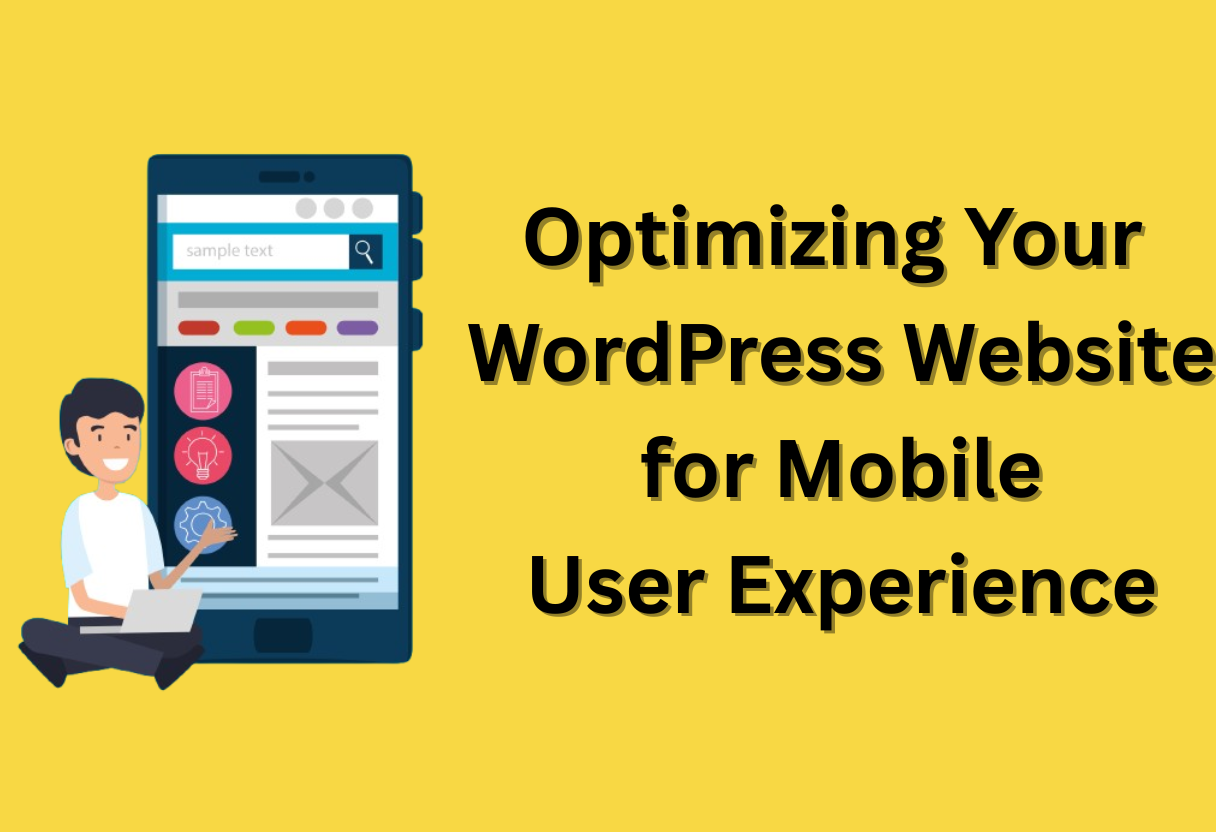There’s no denying that a significant portion of your website traffic comes from mobile users, making it necessary for you to provide an exceptional mobile experience. When optimizing your WordPress site, you not only enhance user satisfaction but also improve search engine rankings. This guide will explore practical strategies and effective tools that you can implement to ensure your site is responsive, fast, and user-friendly on mobile devices. Let’s explore how you can elevate your WordPress site for users on the go.
Understanding Mobile User Experience
As the world becomes increasingly mobile-focused, understanding the nuances of mobile user experience is vital for any website owner. A smooth and efficient experience on mobile devices not only retains users but also enhances engagement and drives conversions. By considering mobile user behaviors, you can ensure your WordPress website meets their expectations and needs, ultimately contributing to your online success.
The Importance of Mobile Optimization
Around 54% of global website traffic now comes from mobile devices, making mobile optimization imperative. Failing to adapt your website for mobile can lead to decreased user retention, higher bounce rates, and lost revenue opportunities. Optimizing for mobile ensures that your content is accessible and enjoyable for all users, encouraging them to engage further with your site.
Key Differences Between Mobile and Desktop Users
Around 87% of smartphone users access the internet daily, but their behavior differs significantly from desktop users. Mobile users tend to seek quick, on-the-go information and may access your site in various contexts, such as while commuting or waiting in line. Desktop users, on the other hand, typically engage in more extensive browsing sessions, allowing for longer interactions and deeper exploration of content.
User behavior varies greatly between mobile and desktop platforms. While desktop users may prefer browsing through various tabs and have longer attention spans, mobile users often look for speed and efficiency. They are more likely to make quick decisions based on easy-to-navigate layouts, which means you need to design your mobile site with simplicity and immediacy in mind. Ensuring your design caters to these differences will help in creating a more satisfying experience for both user groups.
Analyzing User Intent on Mobile Devices
Below the surface of mobile browsing lies user intent, which greatly influences how visitors interact with your site. Understanding what mobile users are searching for, whether it’s specific product information, location-based services, or general inquiries, allows you to tailor your content accordingly. By aligning your offerings with user expectations, you enhance their overall experience, leading to higher satisfaction and retention.
To effectively analyze user intent on mobile devices, you can utilize various tools and techniques, such as keyword research, analyzing user behavior through analytics platforms, and gathering feedback directly from users. By identifying the primary goals of your mobile audience, you can better structure your site and create content that resonates with them. This insightful approach not only enhances user experience but also positions your website as a valuable resource, ultimately encouraging users to return.
Responsive Web Design
Any website you create today should prioritize responsive web design to ensure optimal performance across devices. A responsive design allows your website to adapt seamlessly to different screen sizes, providing a consistent user experience whether accessed from a smartphone, tablet, or desktop. This adaptability not only improves usability but also positively impacts your site’s SEO performance, as search engines favor mobile-friendly sites.
What is Responsive Design?
Above all, responsive design is an approach to web development that ensures your website’s content adjusts dynamically to the varying screen sizes of devices. It utilizes flexible grid layouts, fluid images, and CSS media queries to create a fluid layout that enhances your users’ experience, regardless of which device they choose to browse with.
Implementing a Fluid Grid Layout
By structuring your website using a fluid grid layout, you can create a flexible design that scales smoothly across different screen resolutions. A fluid grid bases the layout on relative units like percentages rather than fixed units like pixels. This approach enables your website’s elements to resize and reposition effectively as the viewport changes, improving usability on mobile devices.
Another benefit of implementing a fluid grid layout is that it allows for better content management. As your website’s design scales, you can ensure that images, text, and other elements maintain clear readability and visual hierarchy. This method ultimately leads to improved engagement since visitors will find your content accessible and enjoyable to interact with on all devices.
Best Practices for Responsive Images
Designing responsive images is vital to match the flexibility of your layout. Utilizing techniques such as CSS image resizing, setting max-width attributes, and employing the `srcset` attribute can help ensure your images adapt seamlessly to various screen sizes. This step prevents loading oversized images on mobile devices, which can lead to longer load times and a less satisfactory user experience.
Hence, adopting the best practices for responsive images can significantly enhance your website’s performance. By optimizing your images for different resolutions and using formats that balance quality and file size, you create a faster, more user-friendly experience. This optimization not only keeps bounce rates low but also boosts your site’s overall search rankings, further solidifying your online presence.
Mobile-Friendly Themes and Plugins
Many website owners underestimate the importance of selecting the right mobile-friendly themes and plugins. Optimizing your WordPress site for mobile users involves more than just responsive design; it requires careful consideration of the tools you utilize to enhance user experience.
Choosing a Mobile-Responsive Theme
Any theme you choose should prioritize mobile responsiveness. Look for themes that automatically adjust their layout based on device size, ensuring users have a seamless experience whether they’re on a smartphone, tablet, or desktop. A mobile-responsive theme not only enhances usability but can also positively impact your site’s search engine ranking.
Essential Plugins for Enhancing Mobile Experience
Before entering into plugin selection, assess which functionalities will genuinely benefit your mobile audience. Opting for lightweight, well-coded plugins can ensure that your site performs efficiently on mobile devices without unnecessary bloat. Look for plugins that provide easy navigation, social sharing, and fast loading times.
Mobile optimization extends beyond just themes; selecting the right plugins can significantly elevate the experience for your users. Consider plugins that improve loading speeds, enhance image responsiveness, and offer mobile-friendly navigation menus. Implementing tools designed to simplify mobile interactions can lead to higher user satisfaction and engagement.
Customizing Themes for Mobile Usability
Plugins can serve as powerful allies in customizing your theme for better mobile usability. Ensure you select plugins that allow you to adjust settings specifically for mobile devices, such as altering font sizes or spacing to enhance readability. Customization options can also help you streamline content presentation for touch navigation.
Also, consider using plugins that provide mobile previews of your site. This feature enables you to see how different elements appear on mobile devices, allowing you to make informed decisions about layout adjustments and style changes. Your goal should be to create a cohesive and user-friendly interface that caters to the preferences of mobile visitors.
Improving Site Speed on Mobile
Unlike desktop users, mobile users expect websites to load quickly due to their on-the-go nature. A fast-loading site enhances user satisfaction and encourages visitors to engage with your content, reducing bounce rates and increasing conversions. Hence, optimizing site speed is a fundamental aspect of enhancing mobile user experience.
The Role of Speed in User Experience
Beside affecting overall user satisfaction, the speed of your website can significantly impact how visitors perceive your brand. A slow-loading site can frustrate users, leading them to abandon your site in favor of a competitor’s. Therefore, prioritizing speed not only improves user experience but also fosters trust with your audience.
Tools for Testing Mobile Speed
Between a variety of tools at your disposal, Google PageSpeed Insights, GTmetrix, and WebPageTest stand out as reliable options for assessing your site’s mobile performance. These tools not only provide speed metrics but also offer actionable insights to enhance loading times. Using them regularly will help you maintain an excellent mobile experience.
At these tools analyze your site’s speed and provide detailed reports, including suggestions to optimize performance. They can identify issues such as large image sizes, excessive JavaScript, and caching problems. By implementing their recommendations, you can improve your site’s loading times and enhance your visitors’ experience on mobile devices.
Techniques to Optimize Loading Times
Between the various strategies available, employing lazy loading, image compression, and minimizing HTTP requests can significantly improve your mobile site speed. Each of these techniques plays a role in ensuring that your site loads as quickly as possible on mobile devices, providing an efficient browsing experience for your users.
This approach to optimization involves streamlining your site’s resources. For instance, lazy loading ensures that only necessary content loads first, while non-critical images and elements load afterward. Additionally, image compression reduces file sizes without sacrificing quality, and minimizing HTTP requests can decrease load times, making your mobile site faster and more user-friendly.
Enhancing Navigation for Mobile Users
Keep your mobile navigation streamlined to improve user experience. A simple and straightforward menu structure allows you to present important content without overwhelming your visitors, ensuring they can easily find what they’re looking for. Organize your menus into clear categories and limit the number of options presented at once to promote efficiency and satisfaction.
Simplifying Menu Structures
On a mobile device, screen space is limited, making it vital to reduce clutter. Aim for a clean layout that features the most important links first for quick access. Consider using dropdowns for subcategories, allowing less important options to remain accessible without taking up unnecessary space on your main menu.
Incorporating Touch-Friendly Elements
Before designing your site for mobile users, focus on touch-friendly elements that enhance usability. Large buttons, ample spacing, and intuitive gestures can make navigation smoother and more enjoyable. Aim to provide a seamless experience by avoiding overly complex interactions that may frustrate users navigating with their fingers.
It’s important to ensure that buttons and links are large enough to be easily tapped and spaced apart to prevent accidental clicks. Additionally, consider the placement of these elements to optimize for thumbs, as users typically hold their devices with one hand. By making navigation intuitive and responsive, you’ll create a more engaging mobile experience for your visitors.
Importance of Search Functionality
On mobile devices, having a robust search function enhances user experience significantly. Since screen space is limited, allowing users to search for content directly helps them quickly find specific information without navigating through multiple layers of menus. This not only saves them time but also increases the likelihood of conversion.
TouchFriendly design elevates the overall functionality of your website. By implementing an effective search bar that is easy to locate and use, you cater directly to user needs, encouraging exploration and interaction with your content. This can lead to increased page views and improved satisfaction as users effortlessly find what they seek.
Content Optimization for Mobile Devices
Now, optimizing your content for mobile users is imperative for enhancing their experience on your WordPress website. It’s about creating accessible, engaging, and easy-to-digest content that reflects your brand and keeps visitors coming back for more.
Writing for Small Screens
Behind the challenge of writing for small screens lies the need to be concise. Mobile users typically skim content, so your writing should convey your message quickly and clearly. Focus on delivering the imperatives without unnecessary fluff to keep your audience engaged.
Utilizing Shorter Paragraphs and Visuals
For mobile users, shorter paragraphs and eye-catching visuals play a significant role in maintaining interest. It’s vital to break up text into digestible pieces, which makes reading easier on smaller screens. Additionally, incorporating visuals not only enhances your content’s appeal but also aids in comprehension.
For instance, using images, infographics, or videos can effectively convey your message while minimizing required reading. Your text should complement these visuals, as they can help grab attention and better illustrate your points. Striking the right balance between text and visuals can lead to improved engagement and retention rates.
Implementing Readable Fonts and Sizes
Fonts should be chosen with care. Use clear, simple typefaces that are easily legible on smaller screens, and ensure that text sizes are large enough for comfortable reading. This attention to detail enhances the overall user experience.
Even minor adjustments, such as increasing line height and ensuring sufficient contrast between text and background, can drastically improve readability. A well-structured layout with thoughtfully selected fonts makes it easier for users to consume your content without straining their eyes.
Testing and Feedback
To ensure your website provides an excellent mobile user experience, it’s important to embed testing and feedback into your optimization process.
Tools for Mobile Usability Testing
The landscape of mobile usability testing is rich with tools that can help you analyze your site’s performance on various devices. Tools like Google Lighthouse, BrowserStack, and Mobile-Friendly Test allow you to simulate interactions, assess load times, and identify usability issues effectively.
Gathering User Feedback for Continuous Improvement
User feedback is invaluable for refining your website’s mobile experience. By inviting your audience to share their thoughts, you can uncover insights that analytics alone might not reveal.
For instance, consider implementing surveys or feedback forms after significant interactions on your site. You might ask users about their navigation experience, loading times, or any issues they encountered. Incorporating these insights into your strategy can lead to meaningful enhancements that align with your visitors’ expectations.
Regular Updates and Maintenance
Testing your website should not be a one-time event. Regular updates and maintenance are necessary to keep your mobile experience optimized.
Tools such as Google Search Console and GTmetrix can help you monitor site performance over time. By scheduling routine checks for broken links, loading speed, and usability factors, you can ensure that your website remains in peak condition, adapting as technology and user preferences evolve.
Conclusion
Presently, optimizing your WordPress website for mobile user experience is imperative for engaging your audience effectively. By implementing responsive design, improving loading speeds, and ensuring easy navigation, you enhance usability on any device. Additionally, optimizing your images and utilizing mobile-friendly themes can significantly impact your site’s performance. Prioritizing these elements not only boosts user satisfaction but also improves your search engine rankings, ultimately driving more traffic to your website. Focus on creating a seamless mobile experience, and you’ll foster greater connections with your visitors.





